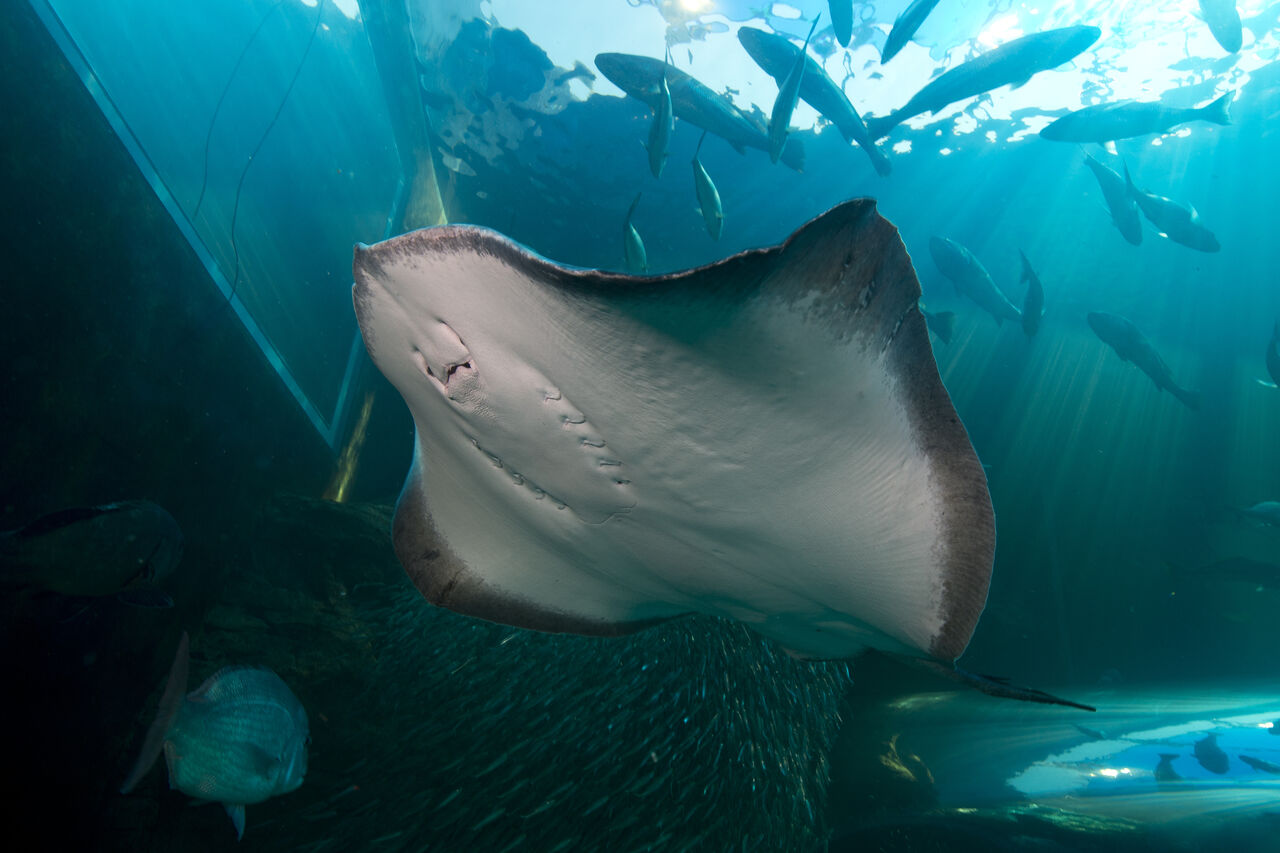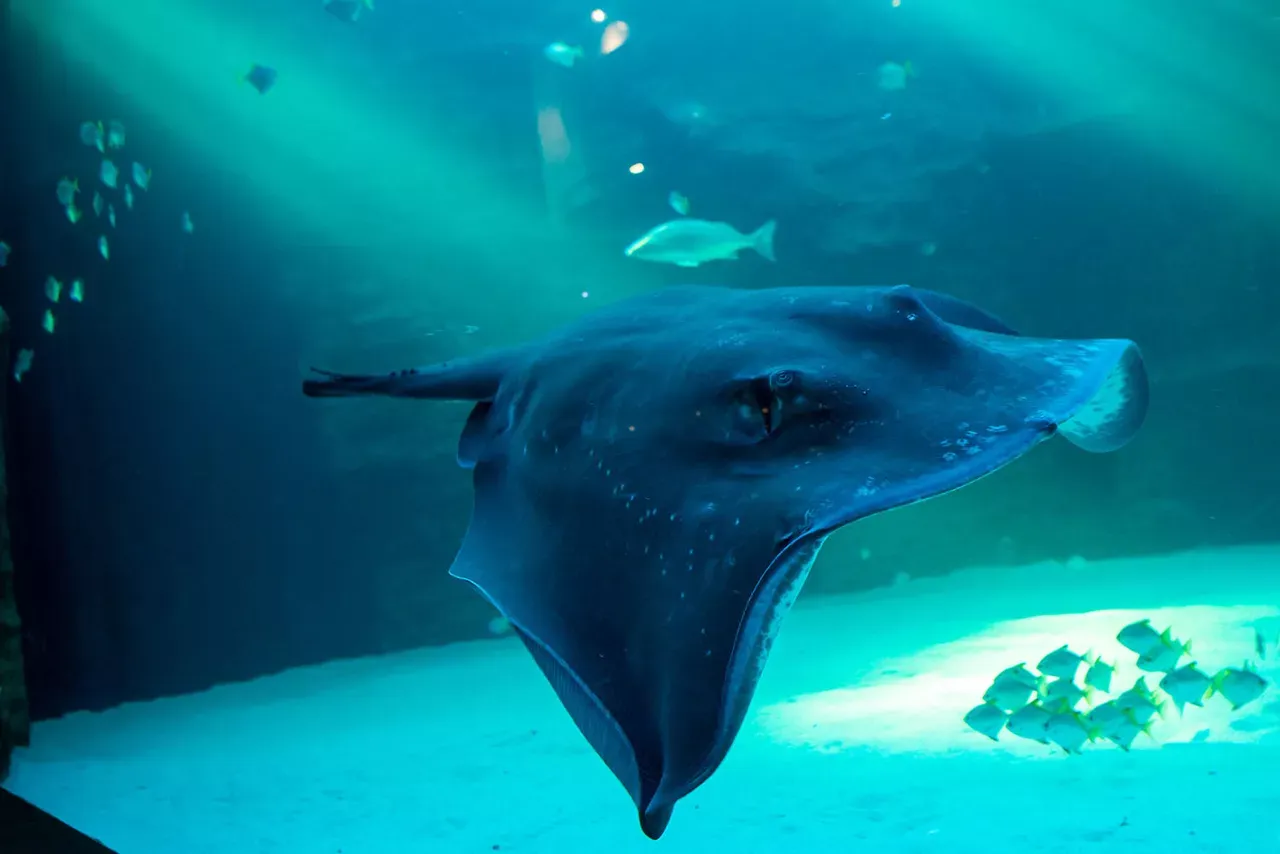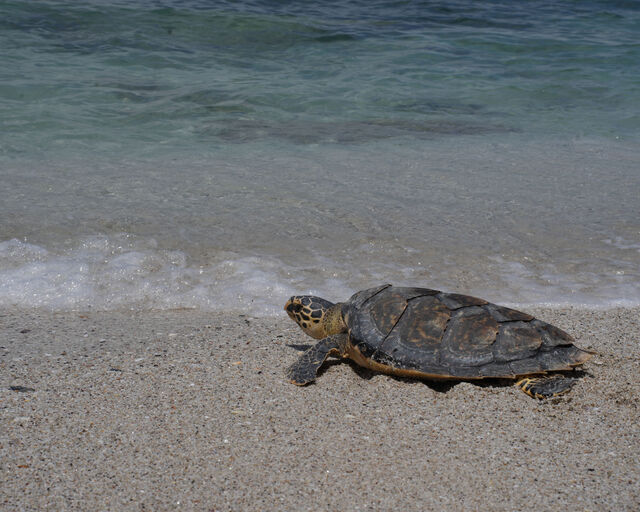Stingrays, with their flat bodies and floating “wings”, are one of the ocean’s most iconic sights. Unfortunately, they’re also the most misunderstood species of ray, sensationalised for their stinging tails.
Stingrays are part of an enormous superorder called Batoidea that consists of over 600 species of rays, some with stinging capabilities and others without. Enjoying the I&J Ocean Exhibit at the Two Oceans Aquarium are common eagle rays, a honeycomb stingray, and a giant shorttail stingray. Each ray is distinct in shape, size and colour, and their tails are also particular to each species. Some stingrays, like the honeycomb stingray, have long, slender tails with serrated, venomous barbs along the ends, while others have barbs closer to their bodies.
Stingray barbs are covered in skin which contains their protein-based venom. This venom can be lethal to potential predators and can be dangerous to humans, but it usually only causes discomfort. In fact, in ancient Greece, stingray venom was extracted and used as an anaesthetic by dentists. Rays only use their stings defensively; when a stingray feels pressure on its back, feels threatened, or becomes trapped, the tail is triggered suddenly and the sting thrusts upward and towards the potential predator. This is an essentially involuntary defence mechanism. Therefore, stingrays are only dangerous to humans when stepped on, injured or harassed. How’s that for a smoking gun?
Every year a few thousand humans are stung by stingrays – almost all are foot injuries from accidentally stepping on one in shallow waters, or fishermen get injured when handling a caught stingray. The overwhelming majority of these have resulted in only minor pain and injury. Of the very few deaths reported, all have been freak accidents, where fatalities are caused not by venom but by damage to the chest or abdomen. Beachgoers, divers, and snorkelers are advised to do the “stingray shuffle” by moving their feet close to the sand in areas with lots of stingrays.

In reality, humans pose more of a threat to stingrays than vice versa. The IUCN lists several stingray species as vulnerable to extinction due to overfishing and habitat destruction. They are often caught as bycatch, and in some areas of the Indo-Pacific, large-scale fishing for rays and sharks occurs.

If we look past the barbed tails, there is much more to stingrays than we realise. For example, the honeycomb stingray in the I&J Ocean Exhibit, affectionally known as “Honey”, is a gentle giant like most of her species. These rays have many unique characteristics that are more endearing than their spiny tails. Honeycomb rays are typically found on soft substrates in shallower waters, using their pectoral wings to uncover prey and many more unique functions. They use their wings to cover themselves with silt… perhaps they are shy? By moving the edges of their wings, these stingrays create S-shaped waves that move from head to tail, allowing them to “fly” through the water.

So, stingrays aren’t as stinger-happy as many people think. They are a varied and beautiful group of animals that deserve a gentler reputation. Be sure to visit these gentle giants at the Two Oceans Aquarium and discover their grace for yourself.
Related News
Sign up to our Newsletter
Receive monthly news, online courses and conservation programmes.




